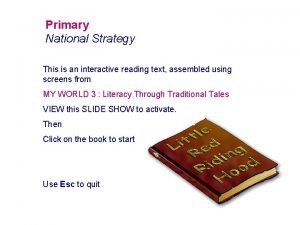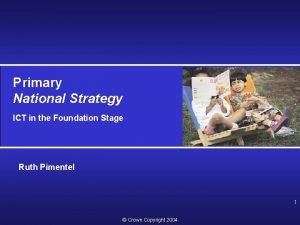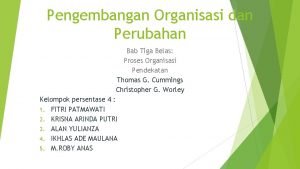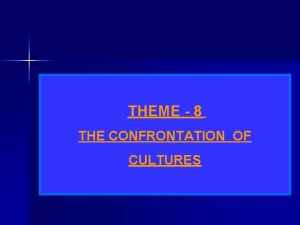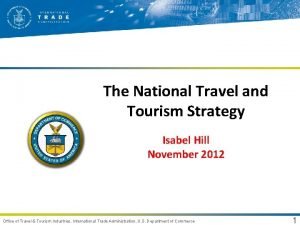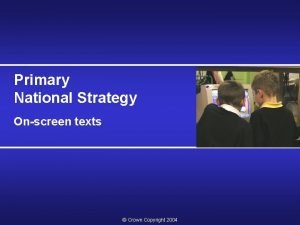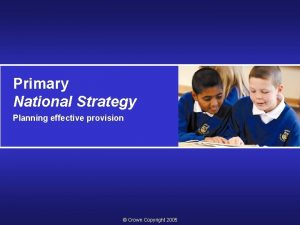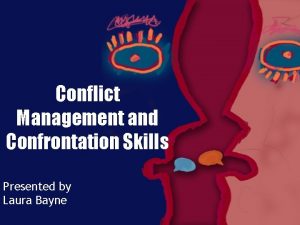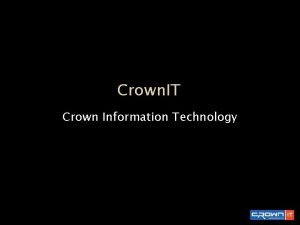Primary National Strategy Conflict and confrontation Crown Copyright















- Slides: 15

Primary National Strategy Conflict and confrontation © Crown Copyright 2005

Objectives • To consider how understanding what lies behind behaviours can inform our work when behaviour becomes challenging • To increase understanding of the processes involved in conflict and confrontation • To explore strategies for reducing and resolving conflict in the classroom • To develop strategies for managing confrontation when it arises 1 © Crown copyright 2005

Underlying principles • Positive relationships with children are the key to positive behaviour • Positive recognition of appropriate behaviour promotes positive responses • The choices teachers make in responding to children’s behaviour are crucial in influencing the choices children make about their own behaviour • It is helpful to use the language of consequences with children • We need to draw on each other’s experience • The session encourages a solution-focused approach 2 © Crown copyright 2005

Conflict • Conflicts are inevitable in human relationships and the student–teacher relationship is no exception • Conflicts are not solely owned by the teacher or the students. Conflicts need both parties; as we say: both own the problem Gordon, T. (1974) Teacher Effectiveness Training New York: David Mc. Kay 3 © Crown copyright 2005

Understanding behaviour • • Attention seeking Power seeking Withdrawal/avoidance Revenge seeking 4 © Crown copyright 2005

Factors to take into account in situations involving conflict • The high emotional content of conflict • The relationship between emotions and behaviour • The importance of being alert to physiological signals • Our responses tend to follow familiar patterns or cycles, which can be difficult to break • ‘Systems’ such as families, classes, staffroom, and so on, develop ways of operating that make change difficult 5 © Crown copyright 2005

What can be in the pot … 6 © Crown copyright 2005

Why are some children and adults more likely to get into confrontation? • It’s a more natural state for them • They lack the skills to avoid confrontation • It gives them a buzz and distracts from other issues • Peer pressure • They are under frequent stress 7 © Crown copyright 2005

Winning and losing 8 © Crown copyright 2005

Three types of behaviour • Passive • Aggressive/hostile • Assertive 9 © Crown copyright 2005

Becoming more assertive • Using ‘I messages’ • Partial agreement • Shifting the focus of discussion onto the real problem 10 © Crown copyright 2005

Reducing conflict De-escalation • Label the behaviour not the child • Avoid threatening gestures and body language • Give the child a choice, but not an ultimatum • Avoid dealing with the conflict in front of an audience • Stay calm (at least on the outside) but don’t try to soothe child as this can make them even more angry • Give the child time to comply • Explain clearly what you want • Show empathy • Use humour to defuse the situation Escalation • Threaten the child • View the conflict as a contest • Handle in front of an audience • Use threatening gestures and body language • Give the child no room for manoeuvre • Raise your voice and sound angry • Deliver unrealistic ultimatums that cannot be implemented © Crown copyright 2005 11

Following on from a confrontation • Recognise how the confrontation has affected you. Seek out a colleague to talk to and be aware that you too will need time before you are really calm • When you have cooled down, make time to talk one-toone with the child about how you both got into confrontation and how it could be prevented in future • Apologise if you played any part in provoking the conflict • As the adult, try not to hold grudges • Look for an opportunity to be positive – catch them being good 12 © Crown copyright 2005

We have considered: • how to interpret children’s behaviour • how to understand the processes of conflict and confrontation • how to plan to reduce the likelihood of conflict arising in the classroom • how to manage conflict in a positive way if it does occur 13 © Crown copyright 2005

Crown copyright statement The content of this presentation may be reproduced free of charge by schools, local education authorities and ITT providers, provided that the material is acknowledged as Crown copyright, the publication title is specified, it is reproduced accurately and not used in a misleading context. Anyone else wishing to reuse part or all of the content of this publication should apply to HMSO for a core licence. The permission to reproduce Crown copyright protected material does not extend to any material in this publication which is identified as being the copyright of a third party. Applications to reproduce the material from this publication should be addressed to: HMSO, The Licensing Division, St Clements House, 2– 16 Colegate, Norwich NR 3 1 BQ Fax: 01603 723000 e-mail: hmsolicensing@cabinet-office. x. gsi. gov. uk 14 © Crown copyright 2005
 Internal evaluation matrix
Internal evaluation matrix Primary national strategy
Primary national strategy The primary national strategy
The primary national strategy Organization confrontation meeting
Organization confrontation meeting Confronter des documents
Confronter des documents Grid od intervention
Grid od intervention Constructive confrontation intel
Constructive confrontation intel Confrontation of cultures
Confrontation of cultures External conflict and internal conflict examples
External conflict and internal conflict examples What is conflict and conflict resolution?
What is conflict and conflict resolution? One subcategory of external conflict is
One subcategory of external conflict is National copyright
National copyright Corporate strategy and business strategy
Corporate strategy and business strategy Level strategy and chase strategy examples
Level strategy and chase strategy examples National travel and tourism strategy
National travel and tourism strategy National unification and the national state
National unification and the national state

